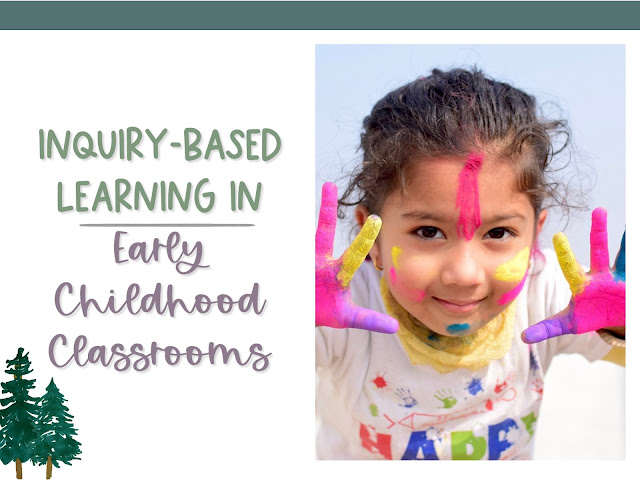Inquiry-Based Learning in Preschool, Pre-k, and Kindergarten
Hey, y’all! Welcome back for another installment of our inquiry-based learning series! Today, we’re looking into how to structure inquiry-based learning in preschool, pre-k, kindergarten, and any other early childhood classroom.
The good news is that our youngest students are naturally drawn to inquiring about things. Ever spent the day with a group of 3–4-year-olds? You probably heard the word “why” more times than you can count. This makes inquiry units instantly engaging. New stuff in the classroom? Everyone will want to investigate.
The challenging part is structuring it so that the kids get the content without making it look like you’re trying too hard. Inquiry in early childhood classroom looks nothing like inquiry in upper grades. And it shouldn’t. The kids’ brains are not the same.
In early childhood classrooms, inquiry centers around a theme for the week, couple weeks, or the month. For instance, you may be learning about spring in the classroom. So, you may have a plant theme for a couple of weeks, then move into insects or life cycles.
You could put out plants for students to explore. I’ve used the cheap annuals from the garden centers at Lowes or Home Depot. I put them out with some magnifying glasses and the kids and talk about what the different parts of the plant are called. For kindergarten, we would write or cut and paste labels to match the parts to the names.
We also taste test different parts of the plants: radishes for roots, celery for stems, spinach or lettuce for leaves, broccoli for the flower, and sunflower seeds for, well, seeds. The kids LOVE this lesson. We work together to match the different foods to the parts of the plants.
You could also have some plants around the classroom to water and experiment with different amounts of sun and water. Littles love exploring with this. Or plant beans in a paper towel in a plastic bag so the kids can watch the roots sprout, then move them to a dirt cup. If you have an outdoor garden space, BY ALL MEANS let them help take care of the plants.
After plants, we move into life cycles. We order caterpillars or ladybugs from Insect Lore and watch as they grow. Many teachers hatch chicken eggs and watch the chickens grow for a few days before rehoming them. I have never been that brave! I have brought in live worms, though, and compared them to gummy worms. That’s the best!
The point is to bring in things that are hands on for the littlest of learners. Once you get started, things start falling into place in epic ways.
When I plan these units for early childhood, my first question is, “What can they touch or build in this unit?” If we’re learning about farm animals, I may have pictures out of barns or farm equipment and encourage them to build them with the materials we have. I also put out toy farm animals to play with and we’ll do some crafts to go with it.
I look through each center in our classroom for ways to incorporate the theme into our centers, math time, read alouds, science, and social studies time. For farms, we may talk about jobs related to the farms, count pigs or sheep, read about farms, etc.
I hope this helps to get the wheels turning in your mind about how to make your early learning classroom more student-centered, hands-on, and inquiry-based.
Thanks for stopping by and have a wonderful week. I’ll talk to you soon.
Stay cozy,





No comments
Post a Comment